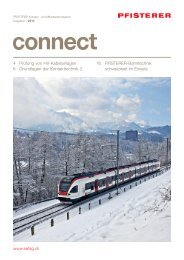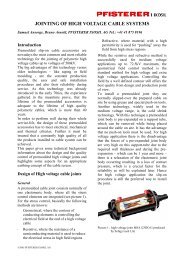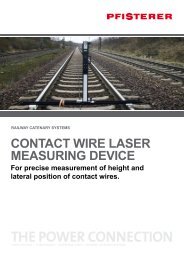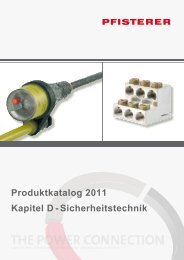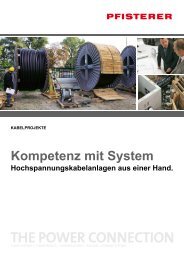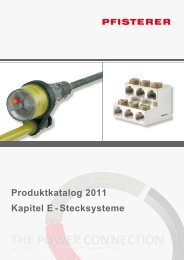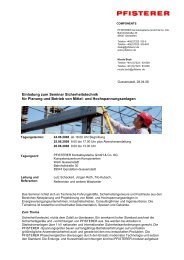Bending of helically twisted cables under variable ... - Pfisterer
Bending of helically twisted cables under variable ... - Pfisterer
Bending of helically twisted cables under variable ... - Pfisterer
Create successful ePaper yourself
Turn your PDF publications into a flip-book with our unique Google optimized e-Paper software.
2.7. The single layer <strong>helically</strong> <strong>twisted</strong> cable as a calculation example<br />
The deliberations ons and and equations equations derived derived above above will now be applied to to a a single single layer layer conductor<br />
conductor. The<br />
aluminium/steel aluminium/steel conductor conductor 35/6 35/6 in in acc. with with DIN 48204, 48204, Fig. Fig. 2.19, 2.19, is is used in the example because because it it has<br />
a simple and clear construction – rendering it suitable for “manual” calculations. The conductor data <strong>of</strong><br />
interest here are:<br />
− 1 core wire <strong>of</strong> steel δ = 2.7 mm, ASt A = 5.73 mm 2 = Ad<br />
− 6 layer wires <strong>of</strong> aluminium δ = 2.7 mm, AAl A = 34.38 mm 2 = 6 Ad<br />
− Lay angle β = 10° (estimation)<br />
− Average layer diameter dm = 5.4 mm = 2 rm<br />
− Coefficient <strong>of</strong> friction µ = 0.1 (assumption)<br />
− Young’s modulus ESt St = 210 000 N/mm 2 , EAl = 70 000 N/mm 2<br />
Fig. 2.19 Cross-section section <strong>of</strong> an ACSR conductor 35/6 (see also Fig. 2.7)<br />
Internal conductor state<br />
The question <strong>of</strong> how far the wire displacement has progressed must first be resolved. This may be<br />
solved using the two equations (2.24) and (2.23):<br />
37



